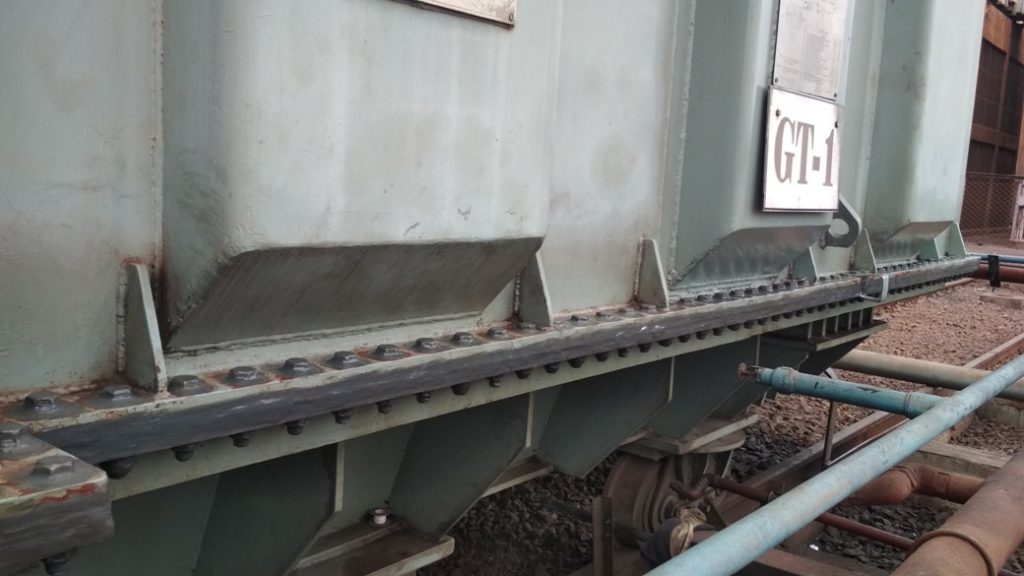
American Polywater Corporation makes a range of specialty adhesives and sealants that find application in the communications, electrical and water/gas sectors. In this exchange, we have Charles Cole, Vice President – International Division, American Polywater Corporation, discussing in depth “Polywater PowerPatch” which is solution system to fix transformer leaks. India, with a huge and growing installed base of distribution transformers, represents a very important market for American Polywater, notes Cole.
What is a “transformer leak” and what are its typical causes? Specifically, can faulty design lead to a transformer leak, or is it substandard material?
A leak is any physical defect in the structure of the transformer which allows the escape of transformer oil or SF6 gas. Such leaks can be detrimental to the long-term performance of transformer. It also increases the fire risk and endanger the surrounding environment if not repaired promptly.
There are a number of reasons why leaks form in transformers. These include mechanical causes such as improper seating of bushing wells and damages during transport. Leaks also can be created with prolonged exposure to the elements such as sunlight, freeze/thaw cycles, or other natural phenomenon like lightning strikes.
Transformer leaks also result from poor design, poor workmanship or the use of inferior quality materials used in the manufacture of the transformer. For example, improperly welded seams can result in leaks that are not discovered until the transformer has been delivered to the field. Inferior material such as lower gauge metal is more susceptible to damage from vibration, which create leaks.
What is the potential damage caused to a transformer and to the electricity grid, due a leak? What can be the extreme effect of a transformer leak?
When oil or SF6 gas leaks from a transformer, it causes moisture from the atmosphere to enter the transformer. Such moisture ingress is a slow process. When leaks are not sealed after long periods of time, moisture in the winding insulation increases to reduce its dielectric strength. Once the transformer is wet, it causes accelerated ageing of the transformer insulation making it a weak component in the electrical grid.
What are the issues or concerns with conventional leak repairs done in Indian market?
A change of gaskets or welding has been the preferred alternatives used in conventional transformer repair. In many cases, they are difficult to perform or prohibited under existing work and safety practices. Welding repairs of transformer leaks must be done with care so that neither leaking oil nor the transformer catches fire. Safety procedures inside industrial premises often do not allow such risks. Hence, it is left to the contractor to seal the transformer by whatever means, and to warranty the repair for a minimum of one year.
The repair of leaks in transformers is a specialized application where the presence of oil makes it difficult for many materials to maintain the seal of leaks over an extended period of time. There are many sealants available in the market. Most are not designed nor tested specifically for the repair of “oil-filled transformers”. Contractors are unsure of which of these sealant options is an appropriate solution for power transformer leak repair. As a result of this uncertainty, the appropriate leak repair sealant is left unspecified to expose the contractor to ongoing costs in the event of premature failure within the warranty period. Unspecified repair materials also leave the asset (transformer) owner vulnerable to costly repairs after the expiration of the contractor’s warranty period.
The understanding and specification of the performance requirements are critical to the selection of a leak repair system. While the mechanical performance, e.g. adhesion and weathering, of the repair materials is important, the chemical and electrical compatibility of the sealant material are equally critical. If chemically incompatible, gases can form inside the transformer which can react with and degrade the transformer oil. If the repair material is dielectrically incompatible, partial discharges can be generated in the transformer to accelerate decomposition of the paper insulation, degradation of oil quality and aging of the transformer.
We understand that American Polywater Corporation has “Polywater PowerPatch” as a solution to transformer leaks. Tell us more.
American Polywater’s PowerPatch® is a system developed specifically for in-situ transformer leak repair. PowerPatch® is used around the world to repair both passive and active leaks. The latter type where oil or gas is escaping makes it difficult to repair with traditional processes like welding. PowerPatch is used to repair micro-holes, bushing leaks, valve stems leaks, leaks through nuts and bolts, gasket leaks and cooling fin leaks.
The choice of a repair technology such as PowerPatch should take into account various factors. These include:
Pressure Resistance: Once a leak is repaired it must withstand potentially high pressures over extended periods of time. PowerPatch can support pressures up to 13.5 bars and can be used in even the largest sub-station transformers.
Dielectric Properties: The repair technology must have similar dielectric properties to other components in the transformer to minimize partial discharge potential. PowerPatch has dielectric properties similar to both the oil and solid insulation in the transformer with a breakdown voltage of 43kV. It does not contain any metallic particles as do other repair technologies.
Weathering: Repaired transformer leaks need to be durable and not degrade with exposure to the elements. PowerPatch is a durable repair technology designed to last for the life of the transformer. It will withstand long-term exposure to UV light and extreme temperature changes. It will not lose adhesion with exposure to moisture.
Removability: In some cases, the transformer repair is done on a temporary basis so that repair or a replacement can be scheduled. In these cases, easy removability of the temporary repair is a valuable characteristic of the repair technology. Unlike rubber-based repair systems, Powerpatch can be quickly and easily removed to reduce the cost of transformer reconditioning.
In which countries is Polywater PowerPatch marketed? What are currently your biggest markets?
Polywater operates in over 80 countries around the world. PowerPatch is used in many of them. High use areas of PowerPatch include the Middle East, Australia, North and Central America.
India has a huge population of distribution transformers and their numbers are even increasing to due to widespread electrification. How do you see the potential?
We see great potential for PowerPatch in the Indian market. Polywater commissioned a market study of the Indian market three years ago that analyzed the number of transformers to be installed over a ten-year period and the number of transformers that would come out of warranty in the same period. The estimates based on the study were that 40,000-60,000 more transformers would be coming off warranty in this period. Another conclusion from the market study was that 5-10 per cent of the out-of-warranty installed base develops leaks every year. These findings suggest that the need for the repair of power transformer leaks in both ageing and new populations will be great.
The rate of failure of distribution transformers in India is dubiously the highest in the world, due to alleged use of substantial material, among other things. Does this make them susceptible to leaks as well?
As mentioned above, sub-standard design, materials and workmanship make transformers susceptible to leaks. While many of the new designs are good from an electrical efficiency standpoint by reducing no-load and load losses, some are not adequately designed for efficient oil circulation in the transformer. This often results in poor heat dissipation which leads to high operating temperatures. When coupled with lower grade materials and poor workmanship, like poorly welded seams, higher temperatures increase potential for more leaks and accelerated aging of the transformer.
Currently, what is the extent of your operations in India, with respect to Polywater PowerPatch?
India represents a strategically important market for Polywater. The ageing population of transformers and their generally poor condition suggest that the potential for PowerPatch use in India is high. Polywater has committed resources over the last few years to educate the Indian market about the advantages of using a Leak Repair Technology like PowerPatch. We endorse the mission of Swachh Trafo Abhiyan to form clusters of utilities and industries to:
- share transformer leak experiences;
- identify and promote the use of appropriate materials and leak repair practices; and
- develop an understanding that leaks involve not just the costs associated with loss of oil, but that leaks also provide a pathway for moisture ingress into the transformer and increase the risk of fire and environmental damage.
In addition, Polywater has certified installers of PowerPatch in India, like LeakXpert, to ensure that the quality of workmanship and durability of the repair are of the highest order. We will continue to support these and other efforts to further educate the Indian market on the use of PowerPatch.
In brief, please describe other products and services offered by American Polywater Corporation.
Other products that Polywater sells into the electrical market include:
- FST Foam Duct Sealant: to seal underground cable raceways to protect them from ingress of water, gases and rodents.
- PMT Pedestal Sealant: to establish a water and rodent-proof protective barrier for pad mounted transformers.
- Duraplate Epoxy Mortar: to repair leaks and defects in cement structures such as transformer basements.
- Cable pulling lubricants: for installation of medium and high voltage cables into underground ducts/raceways.
What would be your business strategy in India, and how do you see the years ahead?
American Polywater understands that to be successful in the Indian market, we must establish a local presence. When appropriate, Polywater will establish an office staffed with local personnel to support our ongoing education, sales and marketing efforts.

